Inverted pyramid (architecture)
In architecture, an inverted pyramid is a structure in the shape of an upside-down pyramid.
The Hanoi Museum and Hong Kong Coliseum are buildings which have an inverted pyramidal shape. The Pyramide Inversée in Paris is a skylight of this shape. The Tokyo Big Sight's conference tower consists of four inverted pyramids mounted on support bases. Whitney Museum is another example and its inverted pyramid design allowed the building to gain an unusual spatial distribution and conform to the New York City's zoning requirements.[1] The Tempe Municipal Building's inverted pyramidal shape helps in keeping the building cool in summer and warm in winter.[2] The same applies to Slovak Radio Building in Bratislava, Slovakia. The inverted pyramid can also be integrated as a component of a structure such as the case of the stalactite work design, which is formed by an intricate corbeling of brackets, squinches and inverted pyramids.[3]
Limitation of Inverted pyramid
The design of the structural engineering follows the rules of structural performance under specified design loads, in the so-called structure code. while the dead load directly depends on the choice of structural materials for a given structural function, live and accidental loads are usually associated with an area where a structure must execute. Contrary to the engineering principles of Ancient Egypt, the inverted pyramid was designed to illustrate how the laws of gravity can be bent, and what can be changed realized by modern engineering to realize its function intelligently areas of engineered structures are subject to extreme live loads and unexpected load conditions, such as earthquakes and high risk of high wind season loads. A hybrid structural concept was specified, including lightweight structural walls elements anchored to a relatively heavyweight structural core. Suggested the design concept conforms to the global balance equation defined by the building and should be a structural example from a structural design point of view. As with any other project involving non-synthetic geometries, the design and construction of the Inverted Pyramid are very sensitive to management options, ensuring high-precision manufacturing and precise control of its production.
Gallery
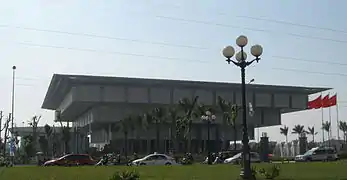
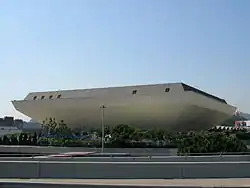
.jpg.webp) Louvre Pyramide Inversée
Louvre Pyramide Inversée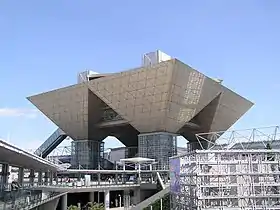
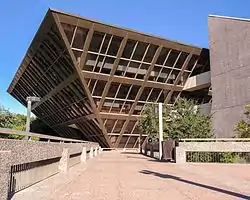
 222 Jarvis Street, Toronto
222 Jarvis Street, Toronto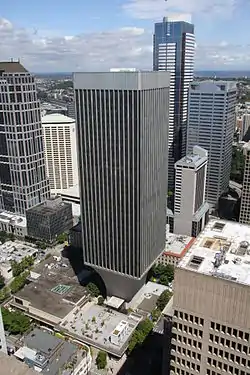 Rainier Tower, Seattle
Rainier Tower, Seattle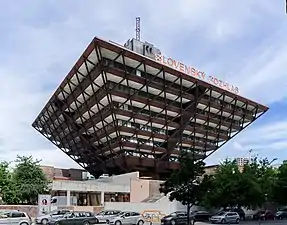 Slovak Radio Building, Bratislava
Slovak Radio Building, Bratislava Pyramid on Central, Phoenix AZ
Pyramid on Central, Phoenix AZ

References
- Yaneva, Albena (2009). The Making of a Building: A Pragmatist Approach to Architecture. Oxford: Peter Lang. p. 78. ISBN 978-3-03911-952-3.
- Toscas, Mariana (January 1, 2012). "Arizona's Avant-Garde Architecture". Journal of Property Management: 34–35. Retrieved July 14, 2014.
- Ching, Francis D. K. (2012). A Visual Dictionary of Architecture. Hoboken, NJ: John Wiley & Sons. p. 270. ISBN 978-0-470-64885-8.